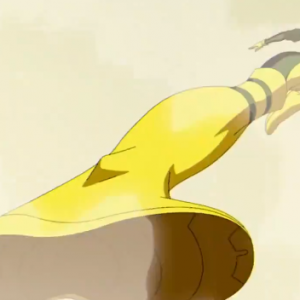Elementary, mglw’nafh hh’ ahor.
The Sinking City has one of the coolest settings of any game I’ve played in a while. You take the role of a private investigator in the 1920s who’s come to the coastal city of Oakmont, Massachusetts, where something dark and strange is afoot. Water levels are rising, flooding many of the city’s streets, leaving citizens (and you) to navigate them by boat. Worse, Lovecraftian horrors are emerging from the depths and killing people on land. It’s up to you to discover what’s going on and try to stop it. Along the way, you’ll have plenty of other murders and mysteries to solve.
In my hands-on demo at E3 2019, the investigator had an appointment to meet a man at a theater. When I arrived, I found a police barricade blocking the entrance. “I’ll have to find another way in,” my character said to himself, because that’s how video game characters give hints to players. This would turn out to be one of the more obvious nudges I encountered. For the most part, The Sinking City trusts you to figure things out for yourself.
I headed toward an alleyway on the side of the building, but as I turned the corner, I saw three hideous creatures, crouched on all fours, waiting in the dark. They jumped into action when they saw me, opening their mouths so wide it looked like their heads were splitting in half as they attacked. Ah yes, these were the sanity-testing horrors I’d heard about.
I pulled out a shotgun and killed them, but not before they did some damage. To heal up, I injected the contents of a syringe into my left arm. All better.
Now about that meeting.

I entered the theater through a door in the alleyway, but what I found inside was a crime scene. The man I’d come to meet was slumped in a chair on the stage, with bullet holes in his torso. I approached and investigated his body. “Three in the gut and one in the heart,” my character muttered. “Quick death.”
“
Here’s a detective game that lets you do detective work.
The police had already come and gone. They’d marked the evidence scattered around: a hat on the floor, a phone coated in blood that was still wet. As I looked at each clue, a ghostly snippet of what had happened played out before me. Once I fully investigated the scene, I had to number the evidence to put the crime in chronological order.
Here’s what happened: two men sat on the stage, attempting a seance. A gunman entered the theater, fired shots killing one of them, and fled, dropping his hat as he ran off. Finally, the other man rushed to the phone and called the police.
Investigating the crime scene was enjoyable, but I’ve done similar things in many other games. What made The Sinking City stand out — in addition to its intriguing, Cthulhu-inspired setting — was that after exiting the theater, I was left with little guidance about how to solve the murder. No new objective popped up on the screen. No waypoint appeared on the map to direct me where to go. I could sift through the clues in my casebook, but I’d have to find the relevant details and make the connections myself. The open world awaited.
After playing so many games that tell you exactly what to do every step of the way, I found this deeply refreshing. Here’s a detective game that lets you do detective work.
If you get stumped, the developers say, you can work on side quests until you uncover a new thread. Apparently each mystery has several pathways to the solution, and you’ll find hints if you look in the right places.
That The Sinking City is a game about investigation should come as no surprise, seeing as it’s from Frogworks, the makers of the recent Sherlock Holmes games. This is their most ambitious effort to date, with its sizable open world, monstrous creatures, lengthy main story, and side quests you can tackle in any order, at any time.
I only played about 30 minutes of the game, but it had me intrigued to see more. If it sounds like your kind of thing, you don’t have to wait long to get your hands on it: The Sinking City comes out on PS4, Xbox One, and PC on June 27, with a Switch version to follow.
Chris Reed is IGN’s shopping and commerce editor who has never solved a real-life mystery larger than “where’d I put my phone?” You can follow him on Twitter @_chrislreed.























